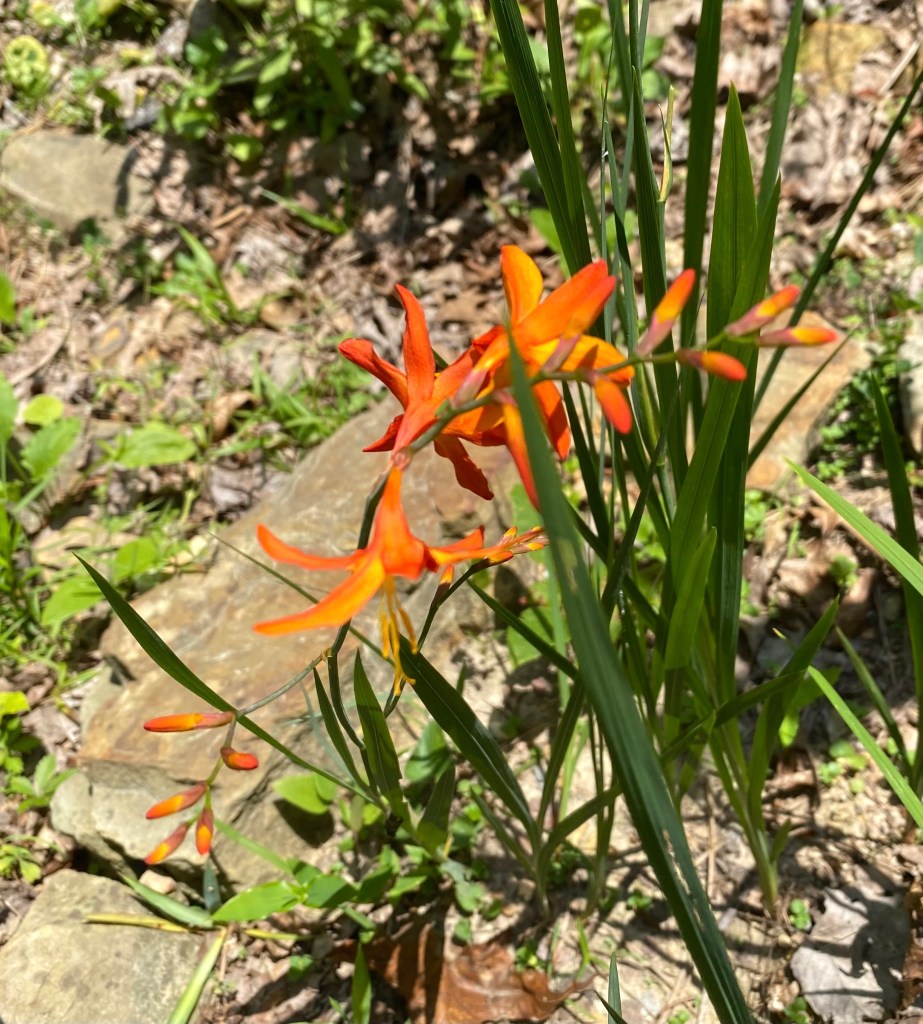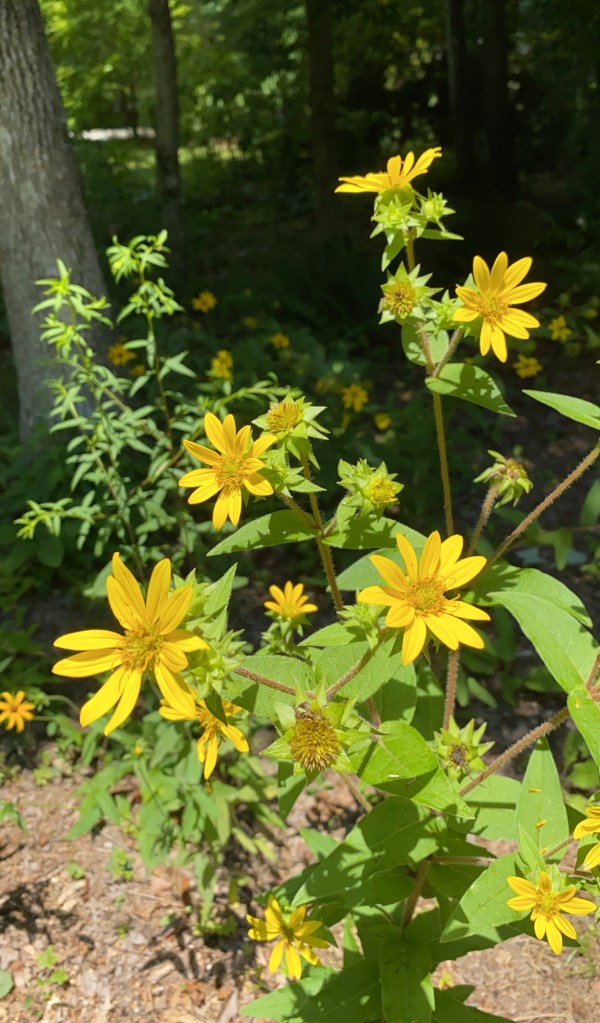1. I have to begin my six on Saturday today with Blackeyed Susans because I consider them a namesake, and they bloom at the time of my birthday in mid June. (For those reading After Eden in email, I remind you to click on the blue post title and view it in your browser to see the featured photo and the best layout.) Providing bright yellow accents throughout the wooded garden and growing in single and multiple clumps elsewhere, Rudbeckia hirta is a North American native that is of additional interest to me because it is reportedly naturalized in China. It is nice to know that one of our natives is now common to China since many attractive plants native to China are naturalized in the US. Trust me though, I do not count Chinese privet, Ligustrum sinense, among those attractive imports.
2. Although I just featured a bumble bee on a rosinweed flower on Wednesday 9 June, my fascination with bees–and rosinweed , or silphium–compels me to include a few photos today. Rosinweed is a native perennial wildflower noted by the Pollinator Conservation Program of the Xerces Society as of special value to bees. Although the leaves are coarse and the buds are tight and rough, the flowers are bright yellow and stand three to four feet in the air. They hold on for a rather long time, too. Interspersed in places with the Blackeyed Susans, they draw the attention of people and bees.
3. Just beginning to bloom is another native wildflower, skullcap. Scutellaria is in the mint family, and skullcaps have a history of various uses in traditional herbal medicine, an area into which I am not brave enough to venture. But, there is interesting reading there for anyone interested in doing a little research. I don’t know the specific species growing in the wooded area of the garden, but they are attractive for a short time once in bloom. Before blooming, however, they are easy to overlook.

4. I can identify only one of the three daylily varieties in flower this week, Hemerocallis fulva, also known as orange daylily, tiger lily, and ditch lily. And, certainly they can be found flourishing along roadside ditches in Alabama. They are not, however, native; rather they are Asian.
5. I have a large patch of Crocosmia Lucifer that has produced lots of foliage for years but very few blooms. Last year when I was thinning out that patch, I planted a few bulbs in another spot that gets a little more sun. The result is below. Not a stunning show by any means, but at least these plants are producing blooms. I suppose a few more transplants are in order this year if I can find some more really sunny spots.

6. I call the composition below fountain with purple petunias, impatiens, and propane. I will sign off on that artistic note : ) and remind readers to visit the site of SoS’s major-domo, The Propagator to see his six, find links to other gardens, and check guidelines for joining in with the rest of us.











Very interesting selection. Silphium is a wildflower I’ve never come across. I wonder whether it is hardy here in zone 6. I’ll have to look into it. Although I’ve never managed to keep a black eyed susan safe from the rabbits so I imagine they would find it tasty also!
LikeLiked by 1 person
The leaves of the silphiums are so tough, I think the rabbits would let it be! I regret that they eat your blackeyed Susan, though. They really are favorites of mine.
LikeLiked by 1 person
Yes it’s also a favorite of the rabbits!
LikeLike
A lovely selection. I particularly like the Scutellaria.
LikeLiked by 1 person
Arghhhhh!! I want my Blackeyed Susans to look like yours!!!
LikeLiked by 1 person
All the credit belongs to them. I just let them grow where they will for the most part. When they are done blooming, I mow.
LikeLiked by 1 person
Rudbeckia hirta is grown in the UK as an annual, but all much “improved” on your wild form. It grows as a garden escape to a degree but R. laciniata, cone flower, has more of a foothold. What would its natural habitat be? As an annual I’m thinking disturbed ground, or does it grow where little else does, so it has bare ground to seed into?
LikeLike
Open fields, meadows, woodland edges, wildflower gardens are all perfect spaces for Blackeyed Susans. Certainly they grown with other North American natives. Mine are anything but “improved.” Almost all are self-seeded.
LikeLike
Ah, propane. How dadaist! Well, I still like the black eyed Susan best of these six. It is such a prairie flower; or that is how it seems to me. (I do not know much about the prairies or the plains, but I would sort of expect to see black eyed Susan there.)
LikeLiked by 1 person
Prairies, meadows, wildflower gardens. They all provide good homes.
LikeLiked by 1 person